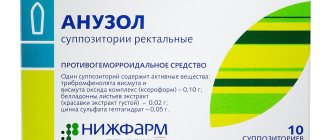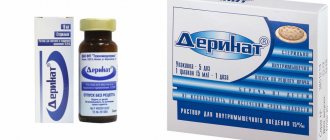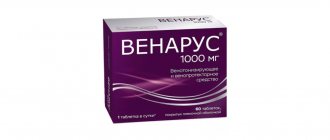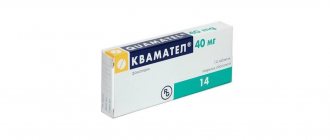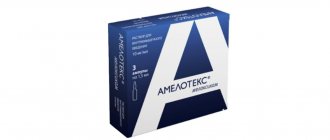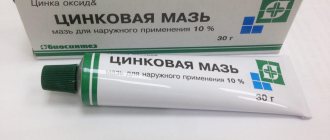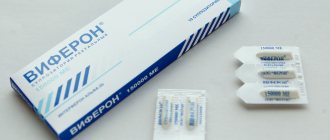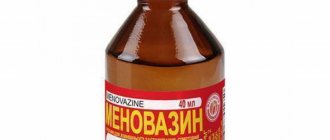Properties
Pharmacodynamics
Due to its completely natural composition, Normoflorin D has a complex effect on the digestive system:
- inhibits the activity of pathogenic bacteria;
- prevents the penetration of toxic substances;
- improves intestinal motility;
- reduces the concentration of oxalates and cholesterol;
- stimulates the restoration of the protective biological film on the mucous membrane of the stomach and other digestive organs;
- helps in the breakdown of milk sugar (lactose);
- strengthens human immunity, acts as an immunomodulator;
- reduces the risk of developing atopic dermatitis.
Another advantage of the drug “Normoflorin D” is the absence of a highly acidic environment. This allows it to be used in the presence of hyperacid gastritis, ulcerative lesions of the digestive system and other pathologies associated with high acidity.
Pharmacological properties
Has general strengthening, immunomodulatory activity; effective in complex therapy of gastric or duodenal ulcers; for the prevention of antibiotic-associated diarrhea in children aged 1 to 3 years. The biocomplex suppresses the activity of pathogenic microflora, prevents the penetration of endotoxins into the body, and restores the protective biofilm on all mucous membranes. The drug restores intestinal motility, reduces cholesterol and oxalate levels, breaks down lactose, stimulates the production of interferons and the maintenance of the total pool of immunoglobulins. It has a protective effect on damaged cells and improves metabolic processes in the body. Additional information. Prepared with milk hydrolyzate, during the production process proteins turn into oligopeptides, dipeptides and amino acids (indicated for allergies to cow's milk proteins). Does not contain lactose, preservatives, dyes, or flavor adapters. Contaminants regulated by SanPin 2.3.2.1078-01 were not found in Normoflorin® biocomplexes. The components of the medium and raw materials used for the cultivation of cultures of bifidobacteria and lactobacilli are permitted as food substrates.
Instructions for use "Normoflorin D"
The drug can be used by adults and children over 6 months of age. In this case, the dosage depends on the purpose of the course and age. Thus, for the treatment of diseases of the digestive system, it is recommended to take it for at least 30 days in a row. The drug is taken orally 2 or 3 times a day half an hour before meals. The instructions are:
- Shake the bottle.
- Measure out the required quantity.
- Dilute with water or food liquid.
- Take orally.
- Eat after 30 minutes.
The maximum daily amounts for treatment purposes are:
- Children under 1 year – 3-5 ml.
- Children aged 1 to 3 years – 5-7 ml.
- Children aged 3 to 7 years – 7-10 ml.
- Children from 7 to 14 years old – 10-15 ml.
- Children from 14 to 17 years old – 15-20 ml.
- Adults take 20-30 ml.
For prevention purposes, the course continues for at least 14 days in a row. The maximum daily amounts are:
- Children under 1 year – 3-5 ml.
- Children aged 1 to 3 years – 5-7 ml.
- Children aged 3 to 7 years – 7-10 ml.
- Children from 7 to 14 years old – 10 ml.
- Children from 14 to 17 years old – 15 ml.
- Adults take 20 ml.
Indications for use
Normoflorins in gastroenterology
L.I. Shaposhnikova
Inside each of us there is a huge world containing over 500 species of various microorganisms, the mass of which is about 5% of the human body weight, and their number is an order of magnitude greater than the number of cells in the human body. The skin, oral cavity, nasopharynx, stomach, intestines, genitourinary tract. Only if the community of physiological bacteria is hundreds of millions of times greater than pathogenic ones and is able to neutralize their effect, does a biological balance occur between the world of microbes and the macroorganism, in which a person remains healthy.
However, a huge number of factors directly or indirectly disrupt the state of this dynamic balance, and then dysbiosis occurs, which is the trigger of pathological processes in the body.
With dysbacteriosis, the permeability of the intestinal wall to toxins and allergens increases, intoxication develops, and the barrier functions of the liver and skin decrease. which leads to the formation of allergic diseases; Parietal digestion and absorption of micronutrients suffer, causing disruptions in protein-fat, cholesterol and bilirubin metabolism in the body, which contributes to the formation of diseases of the liver and pancreas.
In addition, the synthesis of vitamins and the absorption of calcium and iron salts drop sharply, leading to the development of hypovitaminosis, rickets and anemia, and a violation of the protective function of the microflora leads to a decrease in the body’s immunoresistance, which sooner or later ends in frequent acute respiratory viral infections with the formation of complications in the ENT organs and bronchopulmonary system.
Since initially we are not able to eliminate many of the causes of dysbiosis. Our task is to break cause-and-effect relationships, eliminate the symptoms of dysbiosis, which will help counter changes in the functions of internal organs and systems and reduce the risk of developing a number of chronic diseases.
The efforts of doctors are traditionally aimed at compensating for already changed structures and functions of the macroorganism and do not concern the restoration of microflora. On the other hand, work in recent years shows that microflora should be considered as the most important metabolic organ, taking an active part in all vital processes of the body.
Based on all that has been said and focusing on the Hippocratic principle; “Our food should become our medicine,” several years ago a comprehensive program for solving the problem of dysbiosis, called “Systemic biophytocorrection of dysbacteriosis,” was developed, tested and already patented. This program includes functional food products and dietary supplements that effectively restore and regulate the microecological balance in the body and reduce the risk of dysbiosis.
The main element of the biophytocorrection program is the liquid complexes Normoflorin-L and Normoflorin-B. According to the existing classification of drugs for the correction of microbiocenosis, normoflorins belong to the most promising group and, in addition to microorganisms, contain substances and compounds that stimulate the growth and reproduction of their own obligate microflora and affect metabolic processes in the body.
Liquid forms of normoflorins destroy, neutralize pathogenic microflora, stimulate the growth of normal flora and the production of secretory immunoglobulins, enhance intestinal motility, promoting the rapid evacuation of pathogenic microbes and their toxins from the human body.
Normoflorin-L and Normoflorin-B are liquid complex probiotic preparations of a new generation. They are a complex of living microorganisms (lactobacteria and bifidobacteria) in a physiologically active state and substances of natural origin: organic acids, amino acids (including essential ones), micro- and macroelements, enzymes, low-molecular proteins and endobiotics. Normoflorin-B is prepared on the basis of strains of bifidobacteria B.bifidum, B.longum; Normoflorin-L - strains of lactobacilli L.acidophilus, L.planfarum. The nutrient medium contains the optimal amount of prebiotics with bifido- and lactogenic properties.
The large volume of the growing medium allows the bacteria to remain viable longer (up to 50 days) and actively produce metabolites. The unique production technology eliminates the aging of the culture and the mutation of lacto- and bifidobacterium strains. The liquid form of Normoflorins allows them to be used to eliminate dysbiosis not only in the intestines, but also on the skin, mucous membranes of the mouth, nasopharynx, and genitals.
Normoflorins are intended to restore and stabilize the normal balance of microflora of the gastrointestinal tract, upper respiratory tract, urogenital tract, to increase immunity and restore the anti-infective resistance of the human body.
Liquid probiotics Normoflorins have two active ingredients:
- active living cells of lactobacilli and bifidobacteria with pronounced biological properties. 1 ml of each preparation contains at least 100 billion CFU of probiotic bacteria;
- a balanced composition of substances necessary for the implementation of physiological processes and maintaining homeostasis of the body:
- vitamins: B1, B2. VZ, V6, V12, N, RR, S, E;
- trace elements: Fe, Ca. K. Na, Zn, Mg, Cu;
- organic acids: lactic, propionic, acetic, succinic;
- amino acids: alanine, arginine, ornithine, asparagine, glycine, serine, proline, cystine;
- essential amino acids: valine, isoleucine, leucine, methionine, tryptophan, threonine, phenylalanine;
- glycoprotein complex (muramyl dipeptide), which is part of the bacterial cell wall and promotes nonspecific immunomodulation and activation of T- and B-lymphocytes and macrophages;
- enzymes: lysozyme, lactase.
- All components of probiotics are of natural origin, preparations that do not contain preservatives, dyes, or taste adapters.
Normoflorins have a number of advantages over other probiotics, since the bacteria in the preparations are in a biologically active state and begin to work from the first minutes of contact with the mucosa; they are resistant to gastric juice, which allows them to overcome the gastric barrier and achieve rapid colonization resistance. Normoflorins are physiologically complementary to the human body, since they contain only those components that must always be present in the body of a healthy adult and child.
Another indicator of the quality of Normoflorins is that, having high acidity and antibiotic activity, they suppress the growth of foreign microorganisms, so foreign microflora does not enter the preparations from the outside, even during long-term storage.
A distinctive feature of Normoflorins is the fact that they are prepared on milk hydrolyzate containing residual milk proteins, and during the preparation of the preparations the proteins are converted into oligopeptides, dipeptides and amino acids. In addition, they are low-lactose products containing 0% to 3% lactose, so they are suitable for children and adults suffering from lactose intolerance. Normoflorins contain the probiotic lactitol. Studies have shown that lactitol has a positive effect on the formation of intestinal microflora.
Liquid probiotics Normoflorins have:
- pronounced antagonistic activity - they inhibit the growth of putrefactive, gas-forming and pathogenic bacteria due to the release of endobiotics - lacticins and bactericins, as well as due to organic acids contained in Normoflorins and produced during transit of bifidobacteria and lactobacilli in the intestine;
- immunocorrective effect, manifested by stimulation of phagocytosis and synthesis of immunoglobulins, normalization of the subpopulation of T-lymphocytes, activation of T-killers, stimulation of the synthesis of endogenous interferon in the body by components of the cell wall of bifidobacteria and lactobacilli;
- detoxification effect due to inhibition of pathogenic microflora and reduced penetration into the blood of toxins (indole, skatole, biogenic amines, carcinogens) - producers of pathogenic bacteria. In addition, lactobacilli neutralize the action of phenolic enzymes, which are the main culprit in the growth of cancer cells in the intestines;
- optimization of metabolic processes due to the utilization of undigested nutrients, metabolism of proteins, nitrogen and carbon-containing compounds, recycling of bile acids, active influence on cholesterol and bilirubin metabolism;
- increasing the body's anti-infective resistance by stimulating the production of nonspecific defense factors - lysozyme and interferons, replenishing the human body with vitamins, macro- and microelements, and amino acids.
Normoflorins produced by the production company (Moscow) have undergone clinical testing in many medical institutions and have received good reviews based on clinical observations. and according to laboratory studies. Clinical testing took place with the inclusion of comparison groups in which patients received dry probiotics.
The State Scientific Center for Coloproctology studied the effect of methods of administering liquid probiotics (rectal and combined) on the state of microflora and motor activity of the colon in individuals who underwent colon hydrotherapy. Patients mainly suffered from irritable bowel syndrome with constipation - 56%. All patients had dysbacteriosis of 1-2 degrees (according to the classification of I.N. Blokhina). All patients received liquid probiotics; the number of colon hydrotherapy sessions was 5-10, depending on the pathology. The duration of oral administration of probiotics was up to 30 days. The best results (89.4%) were obtained with the combined administration of liquid Normoflorins.
In the gastroenterology department of the outpatient clinic of the MC UDP of the Russian Federation, Normoflorins were used in patients with irritable bowel syndrome with constipation, accompanied by a violation of the intestinal biocenosis. All patients had grade 2-3 intestinal dysbiosis. The best liver results were obtained when Normoflorin-L was administered in the morning, Normoflorin-B in the evening. All patients had a positive effect: 66.7% of patients noted a persistent disappearance of dyspepsia symptoms, a decrease in pain, and in 53% of cases, after taking Normoflorins, laxatives were abandoned. In 80% of patients, the complete disappearance of pathogenic microflora was noted; in addition, all patients showed positive changes in the clinical picture of concomitant diseases: hypertension, coronary artery disease, diabetes mellitus.
At MONIKI named after. M.F. Vladimirsky studied the effectiveness of Normoflorin-L and B in children with intestinal dysbiosis. Before baking, significant disturbances in the composition of the intestinal microflora were detected (in 86% of children). After the liver treatment, the content of bifidobacteria and lactobacilli normalized in almost all patients, and a decrease in the frequency of enterococci and Staphylococcus aureus was noted.
At the Department of BD No. 3 of the Pediatric Faculty of the Russian State Medical University, children from 1 month to 12 children were observed. In children under 1 year of age, the clinical picture included regurgitation, pain (colic), and undigested impurities in the feces. Older children were observed for chronic gastroduodenitis and functional disorders of the gastrointestinal tract. In all children, grade 2-3 dysbiosis was detected in the intestinal microflora.
As a result of baking with Normoflorins, there was a rapid relief of dyspeptic symptoms, a decrease in pain, and intestinal dyskinesia. In the coprogram of patients, the amount of undigested muscle fibers, plant fiber and starch decreased.
Thus, when correcting intestinal dysbiosis with Normoflorins, a high therapeutic effect was obtained in both children and adults, which served as the basis for including Normoflorins-L and B in a comprehensive program for correcting dysbiosis.
The first stage of the program for improving human microecology is cleansing the body of intestinal parasites, which have a powerful toxic effect on all organs and tissues. For this purpose, the biophytocorrection program includes an antiparasitic complex containing a composition of medicinal plants that have a pronounced antiparasitic effect on mature forms of helminths. their eggs and larvae, as well as antiseptic and antitoxic effects.
To suppress the growth and neutralize the activity of pathogenic microflora, collections of medicinal plants and ready-made herbal preparations are used, which have powerful antimicrobial, bactericidal and anti-inflammatory effects, improving the regeneration of the intestinal mucosa.
The most important component of the program is detoxification and enterosorbation of pathogenic microbes and their toxic metabolites. For this purpose, natural enterosorbents are used, among which the most promising are pectin products containing apple and beet pectin. These enterosorbents have a high sorption capacity (including in relation to salts of heavy metals and radionuclides) and bactericidal activity. In addition, pectins have a mild prebiotic effect, being a reliable substrate for the colonization of obligate intestinal microflora.
A necessary condition for the correction of dysbiosis is the protection of the liver from endotoxins of pathogenic bacteria and intestinal parasites, the restoration of its detoxifying, bile-forming and bile-excretory functions, since even minimal disruptions in the liver affect the digestive processes in the small intestine and metabolic processes of the whole body. For this purpose, herbal remedies containing essential oils and flavolignans (such as silymarin) have been successfully used. providing hepatoprotective, antioxidant and bile excretory effects.
To stimulate the growth of obligate microflora of the body, the complex program includes drugs that ensure the metabolism of automicroflora due to the oligosaccharides and dietary fiber they contain as preobiotic substrates.
A comprehensive program of biophytocorrection and dysbacteriosis is successfully used in many medical and health institutions in Moscow, the Moscow region and a number of Russian cities. Since the program uses only natural products, it is safe and can be used on even infants. Practitioners highly appreciated its effectiveness and cost-effectiveness.
Source of information: https://normoflorin.ru
The article was published on the website https://www.medafarm.ru

